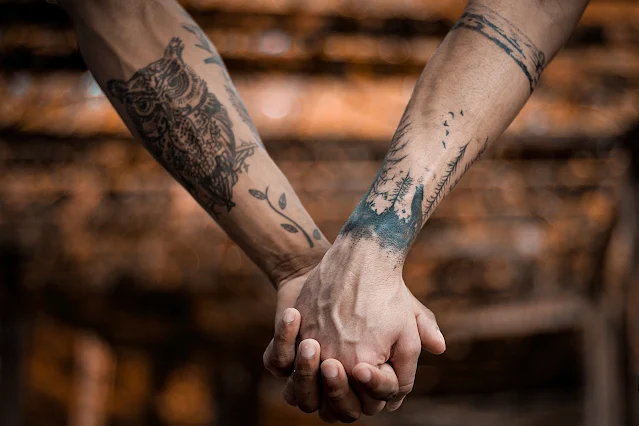The History and Evolution of Tattoo Culture
Tattoo Culture
Introduction
Tattoos have long been a part of human culture, with evidence of tattooing dating back to ancient civilizations. Today, tattoos continue to be popular all around the world, with an estimated 45 million Americans alone having at least one tattoo. While tattoo culture has evolved and changed over time, it remains an important form of self-expression and a way for individuals to showcase their identity and values. In this essay, we will explore the history of tattoo culture, the different styles and techniques of tattooing, and the current state of tattoo culture around the world.
History of Tattoo Culture
- Tattoos have a long and varied history, with evidence of tattooing dating back to ancient civilizations such as the Egyptians, Greeks, and Romans.
- In these ancient cultures, tattoos were often used to signify social status, religious beliefs, or military rank.
- Tattoo culture has also played a role in indigenous cultures around the world, with many indigenous groups using tattoos as a way to mark important life events or to communicate cultural traditions.
- Tattoos have also played a significant role in the cultures of sailors, prisoners, and gang members, with tattoos serving as a way to identify and distinguish members of these groups.
- In recent decades, tattoo culture has become more mainstream and accepted in many parts of the world, with tattoos being seen as a form of self-expression and a way to showcase individual identity.
Styles and Techniques
- There are many different styles and techniques of tattooing, each with their own unique characteristics and techniques.
- Some of the most common styles of tattooing include traditional, neo-traditional, blackwork, realism, and watercolour.
- Traditional tattooing, also known as old school tattooing, is characterized by bold lines and bright colours, often featuring iconic images such as anchors, hearts, and skulls.
- Neo-traditional tattooing is a more modern take on traditional tattooing, featuring bold lines and vibrant colours but with a more stylized and illustrative approach.
- Blackwork tattooing involves the use of solid black ink to create intricate patterns and designs, often with a geometric or abstract aesthetic.
- Realism tattooing involves creating highly detailed and realistic representations of objects or scenes, often using a variety of shading techniques to achieve a lifelike effect.
- Watercolour tattooing involves using a brush-like technique to create a more abstract and ethereal look, often incorporating splashes of vibrant colour.
Techniques of Tattooing
Here is a list of some common techniques of tattooing, along with a brief explanation of each:
- Handpoke/stick and poke: This technique involves using a single needle to manually puncture the skin and deposit ink. This method is often used for smaller, simpler tattoos and can give a more organic and less precise look than machine tattooing.
- Machine tattooing: This is the most common technique of tattooing and involves the use of a tattoo machine, which uses a needle that rapidly punctures the skin and deposits ink. This method allows for a more precise and consistent tattoo and is suitable for a wide range of styles and designs.
- Microblading: This technique involves using a handheld tool to manually create hair-like strokes of ink in the skin, creating the illusion of natural eyebrows or other facial features.
- Traditional tattooing: Also known as old school tattooing, this style is characterized by bold lines and bright colours, often featuring iconic images such as anchors, hearts, and skulls.
- Neo-traditional tattooing: A more modern take on traditional tattooing, this style features bold lines and vibrant colours but with a more stylized and illustrative approach.
- Blackwork tattooing: This style involves the use of solid black ink to create intricate patterns and designs, often with a geometric or abstract aesthetic.
- Realism tattooing: This style involves creating highly detailed and realistic representations of objects or scenes, often using a variety of shading techniques to achieve a lifelike effect.
- Watercolour tattooing: This style involves using a brush-like technique to create a more abstract and ethereal look, often incorporating splashes of vibrant colour.
- Abstract tattooing: This style involves the use of non-representational forms and shapes to create a more abstract and stylized tattoo design.
- Lettering tattooing: This style involves the use of text and font styles to create a tattoo that consists primarily of words or phrases.
Current State of Tattoo Culture
- Tattoo culture has come a long way from its origins, and today tattoos are more mainstream and accepted than ever before.
- According to a 2019 survey, approximately 39% of Americans between the ages of 18 and 29 have at least one tattoo, and tattoos are no longer seen as the exclusive domain of sailors and outcasts.
- However, tattoos are still not universally accepted, and there are certain situations where tattoos may be discouraged or even taboo.
- For example, some workplaces may have strict policies regarding visible tattoos, and tattoos may be considered inappropriate in certain social or cultural contexts.
- Despite these challenges, tattoo culture continues to thrive and evolve, with new styles and techniques emerging all the time.
Conclusion
Tattoos have played a significant role in human culture for thousands of years, and today tattoo culture continues to thrive and evolve. Whether as a form of self-expression, a way to communicate cultural traditions, or simply as a way to celebrate individual identity, tattoos have the power to make a unique and lasting statement. While tattoos may not be universally accepted, they remain an important and integral part of many cultures around the world. As tattoo culture continues to grow and change, it is important to respect and understand the various styles and techniques that make up this diverse and vibrant art form. Whether you have tattoos yourself or simply appreciate the beauty and meaning behind them, it is clear that tattoo culture is here to stay, and it is a vibrant and important part of the human experience.






